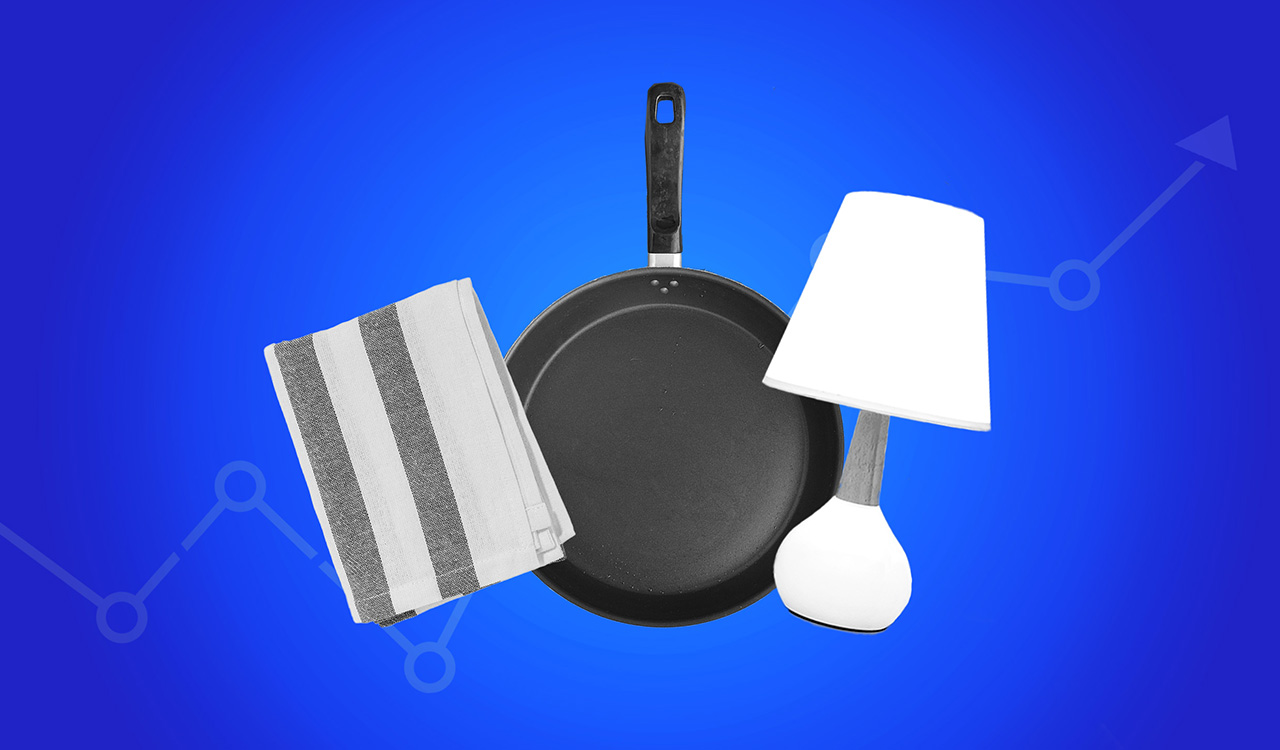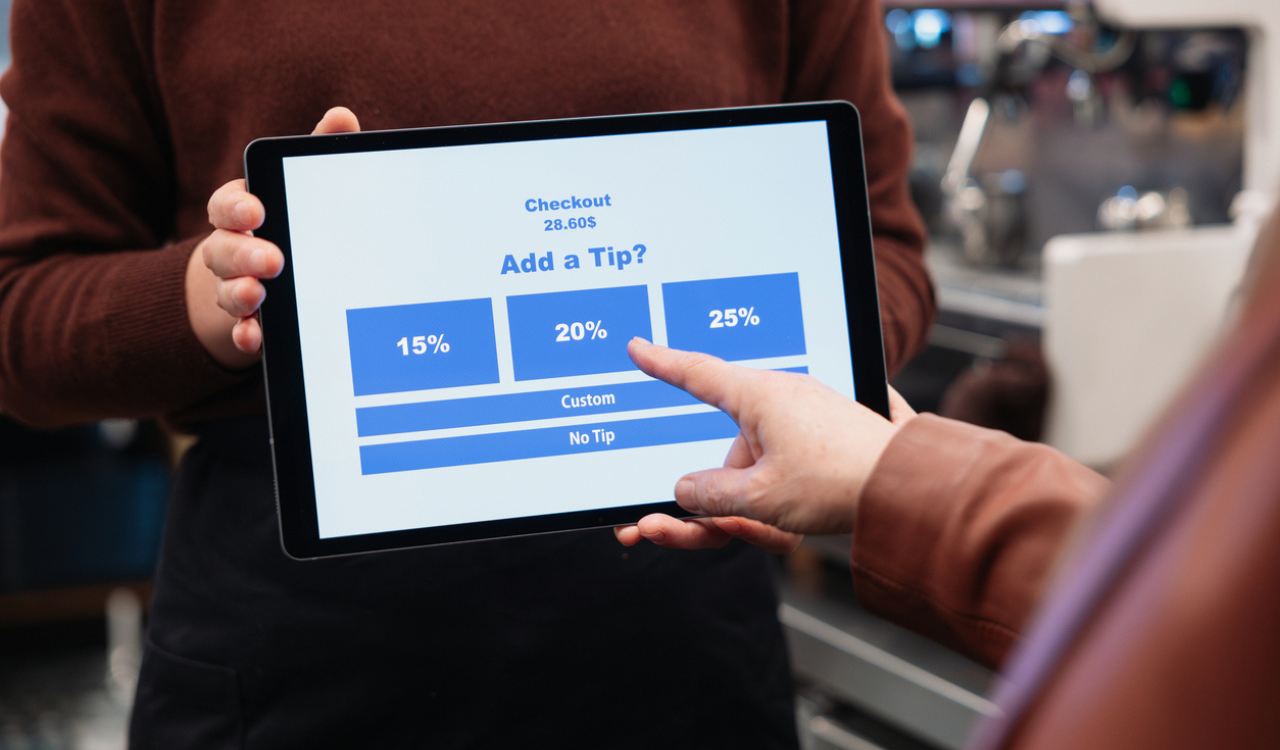It was supposed to be about toasters and towels. But instead, it was all about just one thing: U.S. import tariffs. At two recent major national trade shows for the $60 billion housewares and $30 billion home textiles industries, the activities are typically about the buying and selling of home products that are destined for retail stores and websites later in the year. But at this year’s events in March in Chicago and New York, virtually every conversation and meeting started — and ended — with a discussion of the tariff situation. Whether you were a supplier or a retailer, you wanted to know what was going on, what might be going on later this year and, most importantly, what could your business do about it.
Take something simple like cookware from China. The manufacturer got hit with the initial 10 percent and then this latest additional 10 percent. But since the product is made of metal, it is also subject to another 25 percent tariff levied on anything made of steel and other metals. Do the math and that’s an increase of 45 percent on your new frying pan from China, essentially making the product unviable for sale in the U.S.
To say it was a distraction — some would say an enforced distraction brought about by a presidential administration that seems to have little regard or understanding of how business works — is a colossal understatement.
How Tariffs Matter
Most people in the business of bringing in products from overseas understand that tariffs are simply taxes, another cost added on to what it takes to make the product, transport it to the U.S. and get it into the hands of the final consumer. It’s that end consumer who often doesn’t understand how tariffs work. Many have been led to believe the current political rhetoric that foreign manufacturers are going to pay the additional tariff costs, and that money will be deposited directly into the U.S. Treasury.
Nothing could be further from the truth. The added cost of a tariff– it could be 50 cents for a low-cost trinket or as much as thousands of dollars for big-ticket items like cars, furniture and luxury merchandise — is almost always assessed along the supply chain with the consumer ultimately footing the bill for most of that additional cost.
Tariffs drive prices up, it’s that simple. To work around tariffs, big businesses do tariff engineering including exemptions – whether it’s opening a manufacturing plant in the U.S. or reclassifying or redesigning the product…often de-specing it to make it cheaper to produce, often of inferior quality.
Been Here, Done That
If all of this seems like a bad case of déjà vu from the first Trump administration when companies scrambled to deal with that wave of new tariffs, it’s because it’s quite similar…but now on steroids. During his first presidency, Trump instituted a variety of tariffs — mostly aimed at China — riddled with constant changes, exemptions, reversals and assorted other maneuvers that made life difficult for American importers. But the tariffs then were more modest — usually around 10 percent depending on the product and what day it was — and they were maintained after Trump left office by the Biden administration, becoming defacto costs of doing business.
But now under the second Trump presidency, there are higher tariffs: another 10 percent on goods from China, as much as 25 percent from imports from Mexico and Canada, and even higher rates on selected products from some countries. There has been additional posturing on reciprocal tariffs on goods from elsewhere in Asia, Europe and Latin America that may or may not kick in on April 2.
So, let’s take something simple like cookware from China to make a point. The manufacturer got hit with the initial 10 percent and then this latest additional 10 percent. But as a product made of metal, it is also subject to another 25 percent tariff levied on anything made of steel and other metals. Do the math and that’s an increase of 45 percent on your new frying pan from China, essentially making the product unviable for sale in the U.S. There are plenty more individual examples, but you get the picture.
So, Just Make It Somewhere Else
OK, you might be saying to yourself I’ll just buy a pan made somewhere else. And while cookware is being made elsewhere in the world, the vast majority of it comes out of China. So does virtually any home appliance with a plug. Most flatware is made in China. The largest single producer of sheets and towels is China. Rugs, dishes, lamps, metal furniture: You name it in the home business and China is the largest supplier, often by a wide margin.
During the first round of tariff whack-a-mole, the furniture industry — which had been heavily embedded in China — relocated much of its production of bedroom and dining room furniture and things like cocktail tables out of the country elsewhere to places like Vietnam, the Philippines and Indonesia. But often the individual components of these products were still coming from Chinese suppliers, and these Chinese companies often owned the factories in other Asian countries. If the idea was to punish China, it was a folly: China has a lock on so many markets no matter how you cut it.
What Didn’t Happen
At the time, very little new production came back from overseas to the U.S. that wasn’t already being moved by companies wanting to locate their production closer to their consumers. When auto manufacturers opened factories in the U.S. — as they’ve been doing since the 1970’s it should be noted — it was all about that, way before it was about tariffs.
What undermines U.S.-based manufacturing is the fact that the U.S. no longer has the labor force skilled — and willing — to work in factories. These are not gleaming high-tech facilities where the work is clean and the surroundings pristine. Making frying pans is a dirty hands-on job.
Nor does the U.S. have the supply chain infrastructure in place to make manufacturing efficient. Making bed sheets is not a complicated process but you have to have the cloth to make them, the printing and dying required for various designs, and the capability to package them once they are made. There are too many stories of companies that tried to make a product domestically but couldn’t find any place to buy the required widgets or replacement parts. It was only available from one resource — in China. All of this says nothing of the lead time and cost required to build new factories. Previous factories are long gone (and so outdated they’d have to be rebuilt anyway) or turned into luxury condominiums. When two Asian companies tried to set up U.S. production for bed and bath textiles, both ultimately failed because they couldn’t find labor and the cost of manufacturing was still much higher than similar products coming from Asia.
You have to also understand that we’re talking about sheets and towels and frying pans here, not big SUVs and computer chips, which have massive lobbying organizations to get exemptions and reductions in tariff rates. These much smaller industries just don’t have the muscle to get similar treatment and so they end up suffering more than some of these high-profile industries.
Chaotic Confusion…or Confused Chaos
And here’s the real kicker: even if a company could figure all of this out, learn how to navigate tariffs, adjust its cost structure and even bring back some production domestically, it might not matter because the rules can change every week…or every day. In just the first few months of this administration, the number of tariff proclamations, retractions, adjustments, eliminations and reinstatements has been staggering. And that is what really drove the people in the housewares and home textiles industries crazy.
And that was the prime topic of conversation at these trade shows and industry market events. Not trends. Not innovation. Not optimism. They said they were so distracted by trying to run their businesses knowing things could change yet again. How could you figure out your costs and set pricing? How to look at alternative sources when they could be next to get hit?
Supporters and non-supporters alike say this president’s style is likely to keep everybody and everything so off-balance that he alone can call the shots and control the playing field. That may work when you’re negotiating to buy Manhattan real estate but it’s a disaster for the broader business world. The home products business is just a tiny sliver of that bigger business world but as a microcosm of the situation, it is a vivid example of what these policies do to individual companies…and ultimately to the American consumer. Chaos and confusion are the enemies of running a good business.





